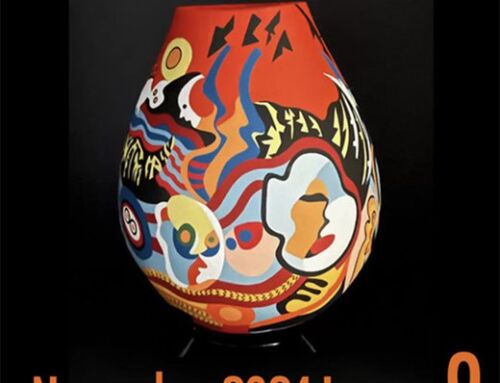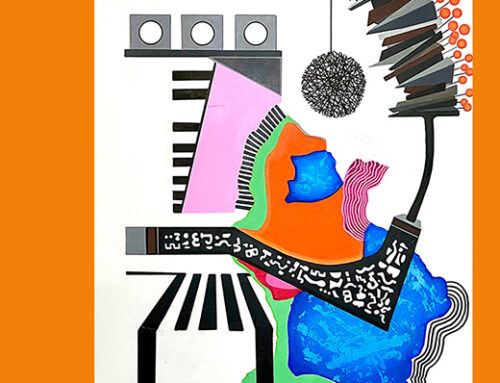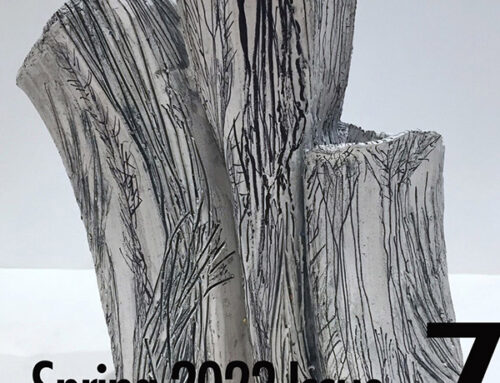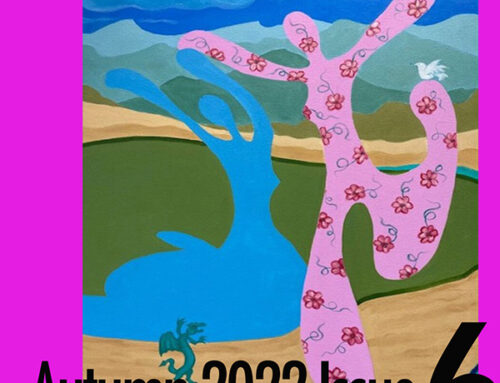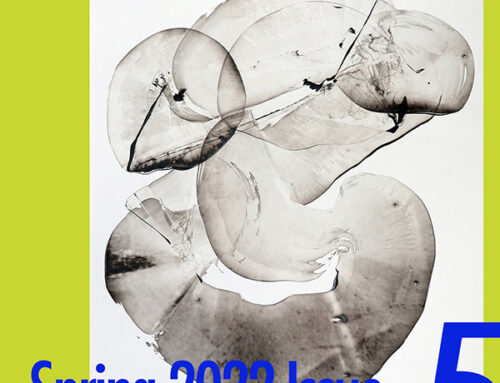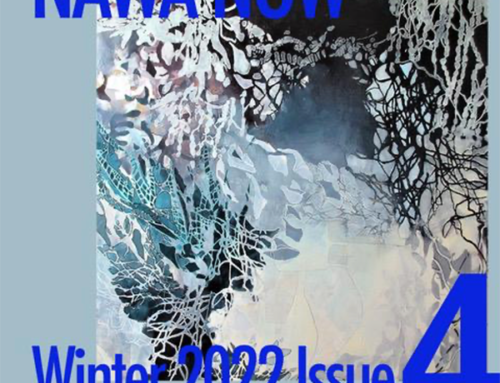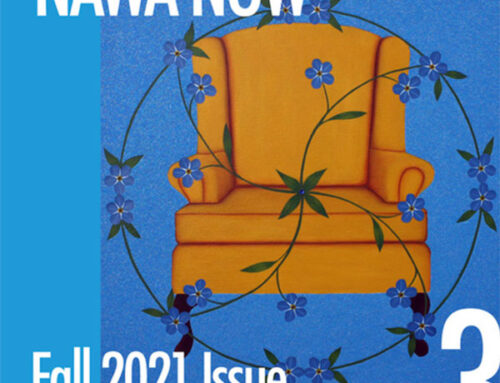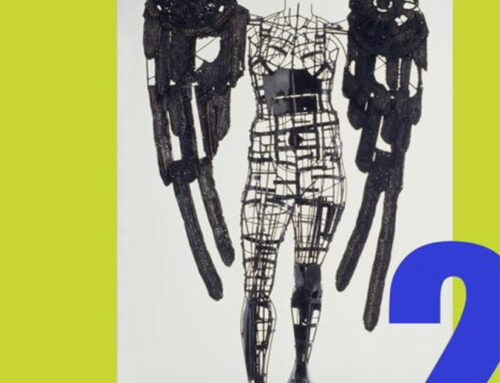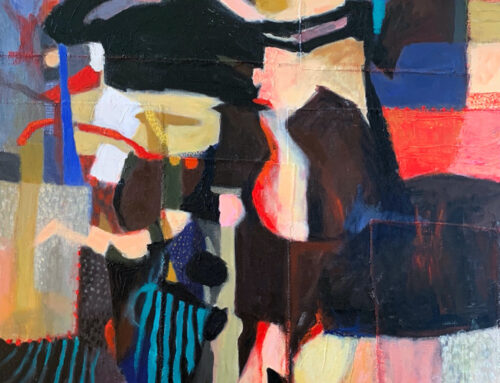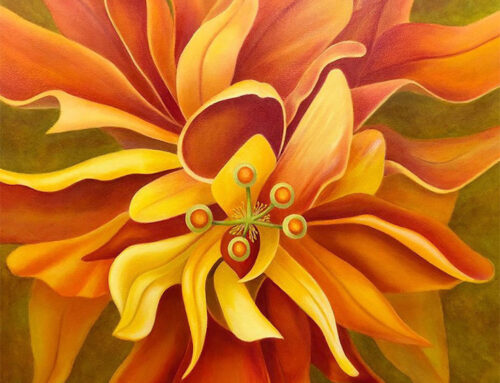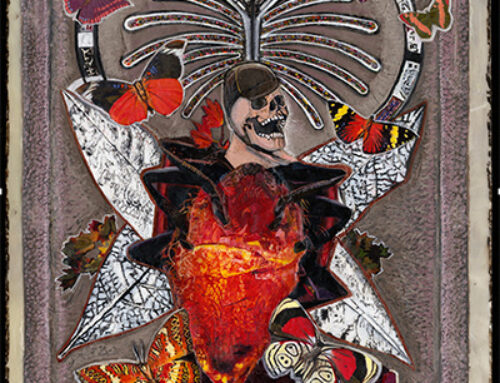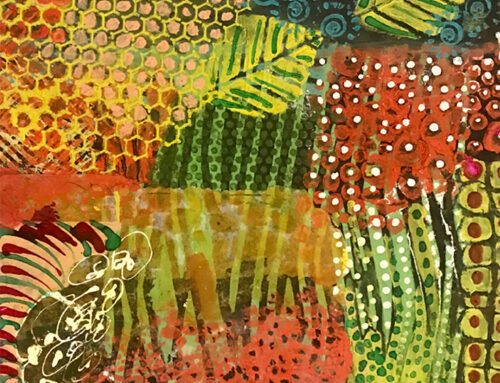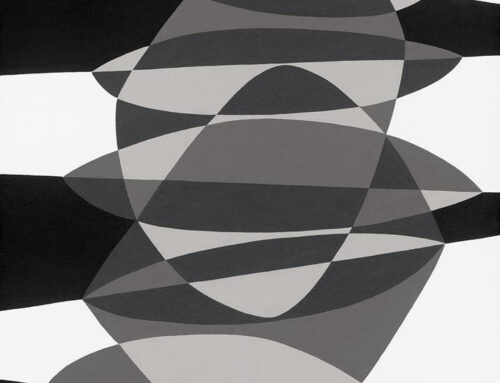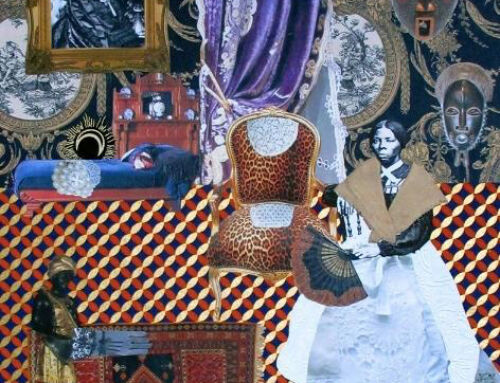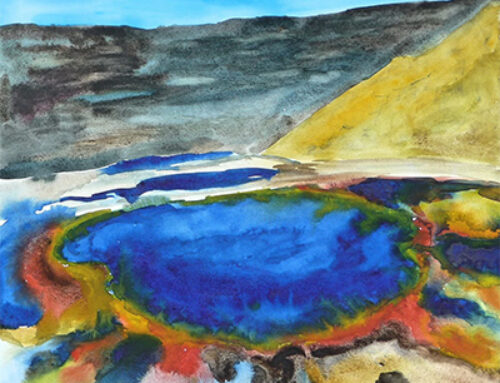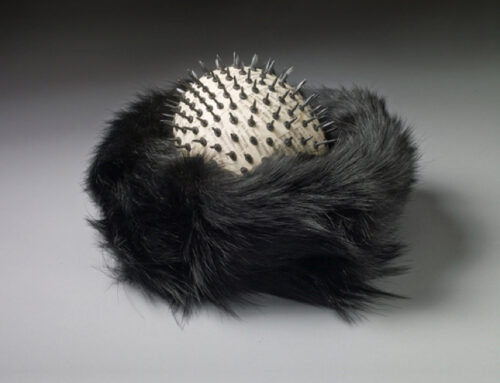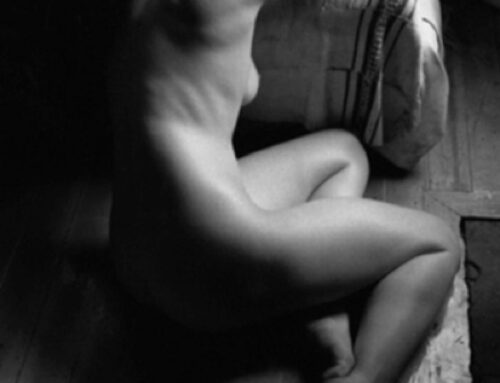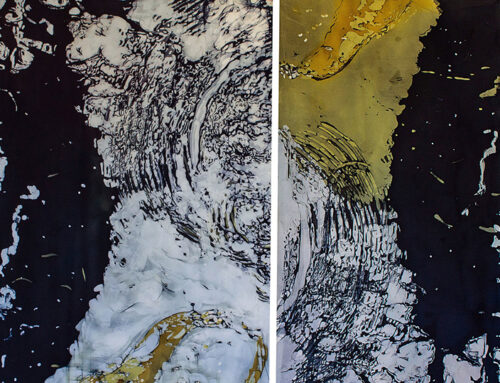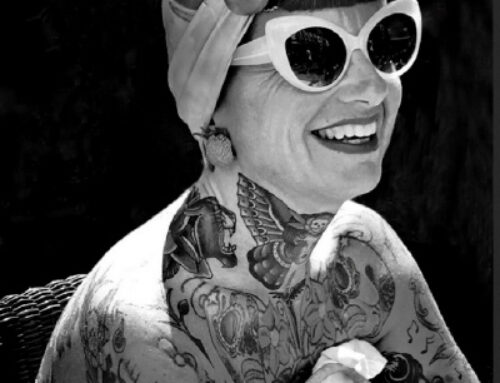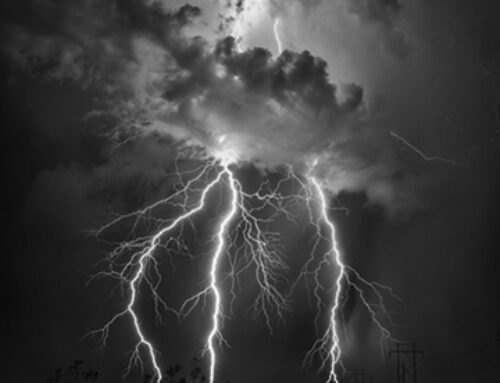
April 2019

Susan Clinard, Storied Beauty, 2018,
Winner of the Margo Harris Hammerschlag,
Direct Carving Competition.
ABOUT Storied Beauty
By carving wood, forming clay, bending wire, collaging paper, and using found objects, I hope to reveal something that you already know but have never felt or considered before—someone else’s story or beauty—so that in turn you see yourself reflected. I am captivated by the subtle nuances in life, the mundane flipped upside down to reveal the poetic, what hope might look like, how a piece of artwork brings one to tears, finding joy in an object’s form, how anxiety might be a knotted ball of twine while openness and acceptance might be represented by a concave space, how art can initiate change… all of this gets woven into my art making.
I have been a working artist for over twenty-six years and a fervent observer of life for as long as I can remember. My work is an exploration of nature’s forms, distorted and perfect, found and inspired. It tells stories, helps us connect and speak about our shared fears, beauty, and struggles. In all my work, I am most concerned with staying honest to myself, to the process of creation, to my materials, and to the subject matter I choose.
My assemblage sculpture entitled, Storied Beauty, incorporates my love of using found objects into my narrative work. The objects and mixed materials help me weave a complex story behind a woman’s life. Her body is an oval frame which incorporates sharp metal objects representing both adornments of beauty as well as inner pain and struggle.
PRESIDENT’S CORNER

Jill Cliffer Baratta, Arts Club of Washington, Washington D.C.
Winter in New York is nothing to brag about. However, it has been full of art, joy, validation and serendipity in spite of temperature swings and soggy, cloudy days.
After much patient back and forth, member Julie Castillo created two branding graphics commemorating NAWA’s 130th Anniversary. Thanks, Julie! We made them into banners that are displayed in the NAWA Gallery, on letterhead, mugs and a third version made into a custom apron. Mugs and aprons are both available for order on our website (see the very top of the home page) or in the NAWA Gallery. These have been a hit with friends and members! It is a joyous miracle that NAWA is still thriving with its mission of giving women artists a grounding, support and opportunities to exhibit, sell their work, and win awards. People have been very enthusiastic about this amazing number 130. We definitely deserve to celebrate ourselves and those who have gone before us. Everyone enjoyed the commemorative re-enactment of NAWA’s founding imagined and written by Sandra Bertrand and performed by Sandra Bertrand, Susan Hammond, Carole Kauffman, Natalia Koren-Kropf, and myself. We thank Maple Grove Cemetery in Kew Gardens, Queens, for loaning us the Victorian costumes and Natalia Koren-Kropf for delivering and returning them to Maple Grove. Many thanks to Odelle Abney for the recorded video of the skit and reception images and to all the members and guests who attended and shared a glass of champagne (or two!) and a Melissa’s cupcake!
This year’s plan has been to open NAWA Gallery shows to all women artists, spreading the word, inviting others to enter our juried exhibits, and make the shows focus on one medium or related group of art media at a time. January was the Watercolor (Luminous Light) exhibit. February’s traditional open Small Works show (one of two annually) had a very successful reception with three art sales and several new prospective members. March will be Collage/Mixed Media/Digital (Layering). There are many more exhibits, our annual luncheon, and other events to come. Stay tuned closely to your emails and our website, and keep in close touch!
Jill Cliffer Baratta
President, NAWA
NAWA – THE EARLY YEARS (1947-1965)
Information from One Hundred Years – A Centennial Celebration of the National Association of Women Artists
By Susan G. Hammond

Louise Nevelson, Sky Cathedral, Painted wood objects, 1958.
On May 6, 1941, the National Association of Women Painters and Sculptors, Inc., became the National Association of Women Artists, Inc. This led the way for larger exhibitions with additional mediums of artwork. The press described the huge 1946 exhibition, which included 382 works of art, as “tightly packed.”
The 1950s opened with recognition from art critic Judith Kay Reed. She praised the “vigor and challenge in the sculptural membership.” In 1951, NAWA held its annual exhibition at the National Academy of Design, which had been hosting the shows since 1945. This exhibition included 318 artworks. Paintings in oil still dominated the annuals numerically, followed by graphics, sculpture, watercolor and miniatures.

Arline Wingate, Untitled, Stone carving, height 22 5/8 in.

Clara Fasano, Penelope, Terra cotta mounted on wood base.
During this time period, NAWA continued to sponsor and promote events, benefits and demonstrations, as well as honor outstanding individuals in various fields of art. In 1952, a benefit was given for sculpture, and four of the sculpture members modeled the busts of four prominent clergymen in front of an audience. The four sculptors were Clara Fasano, Arline Wingate, Anita Wechsler and Helen Belling. The admission fee was one dollar minimum and whoever gave the largest donation would receive the clay busts. The proceeds were donated to the National Conference of Christians and Jews “to promote goodwill and brotherhood throughout the country.”
In1953, NAWA held a similar benefit presentation with portraits painted of outstanding figures, including Margaret Bourke-White, photographer and reporter; Benjamin A. Cohen, Assistant Secretary General of the United Nations; and Howard A. Rusk, for his achievements in medical rehabilitation. This time, the proceeds were earmarked for the United Cerebral Palsy Fund.
NAWA’s annual exhibition continued to get good press, especially the sculpture. Those of Louise Nevelson and Dorothea Green Baum were particularly singled out. The exposure that Nevelson received in these annual shows helped launch her career and established her as one of America’s leading sculptors of the 20th century.
In the 1950s, NAWA’s Argent Galleries continued to serve the needs of other artists as well as NAWA members. The fees for a three week rental were $300. Ads in various periodicals ranged from $19 – $30.38, (New York Times). Twenty-five dollars went for announcements, $14 for professional installation and $10 for sherry and crackers at the opening reception. Letters went around the country inviting artists to participate, thus providing a valuable opportunity for artists in more remote areas to exhibit their art in New York City.
The organization continued its traveling exhibitions, which became very important and served to publicize the organization. Among the international exhibitions were a sculpture exhibition sent to England in 1955, watercolors and graphics sent to Holland and Belgium in 1956, watercolors and graphics sent to Switzerland in 1957, and oil paintings sent to Greece in 1957 and 1958. Numerous traveling exhibitions were circulating through the U.S. at the same time. These shows were offered free of charge to the participating artists.
These traveling exhibitions continued throughout the 1960s, starting with an exhibition of oil paintings sent to Japan, followed by exhibitions of oil paintings and sculpture sent to Argentina in 1963, to Scotland in 1963-64, to France in 1965, and an exhibition of graphics sent to India in 1965-1966.
RED CARPET NAWA MEMBER

Joan Semmel, 2019, Photo: Ross Collab
Joan Semmel
“And we shouldn’t still be talking about why there are no great women artists. If there aren’t great celebrated women artists, that’s because we have not been celebrating them, but not because they are not there.” – Joan Semmel, Art News (3/11/18)
NAWA is pleased to be honoring Joan Semmel as the featured speaker at our Annual Luncheon at the National Arts Club, NYC, on May 9th. This is a special occasion for our membership to celebrate one of the leading painters and feminists in the nation. Often mentioned in the same breath with Judy Chicago, Marilyn Minter and the Guerilla Girls, Joan is, above all, a consummate painter. From her bold experiments in abstraction in the sixties to her later breakthrough figurative images, she has given us an erotic and cultural iconography of our times. Her feet are planted squarely on NAWA’s red carpet.
Joan Semmel was born in New York City in 1932. An early immersion in academic arts training began at Cooper Union under Nicholas Marsicano. She went on to study with Morris Kantor at the Art Students League before earning a BFA from Pratt Institute in 1963. Immediately following her degree, she headed to Spain for seven and a half years where her brilliant saturated colors separated her from the leading Goyaesque painters of that period. But the real sea change for this artist happened upon her return to New York in 1970.

Joan Semmel, Double Embrace, 2016, Oil on Canvas.

Joan Semmel, Flesh Ground, 2016, Oil on canvas.
The city was awash in the surge of feminism and her painting took on a figurative style that began to reflect the power and mutability of flesh. She has often used her own body in colorful configurations that merge abstraction and figuration together in ways that make us question what the body is. “Flesh is essential in terms of who we are…we have to understand that that is not something that limits our freedom…it expresses our connectedness. Empathy comes from knowing if I stick something into my arm, I feel pain, and if I stick something into your arm, you feel pain. And it’s that empathy that makes us human.” (Flaunt Magazine interview, 2016).
Besides earning her MFA at Pratt, she became active in several feminist arts groups devoted to gender equality, a commitment that continues today. In 2013 The Women’s Caucus for Art honored Semmel with a Lifetime Achievement Award. Semmel has taught at the Brooklyn Museum of Art and the Maryland Institute College of Art. As of 2013, she is Professor Emeritus of Painting at Rutgers University.

Joan Semmel, Erotic Yellow, 1973, Oil on canvas, 50 x 98 in.

Joan Semmel, Intimacy Autonomy, 1974, Oil on canvas.
Aging is another theme relative to the human body that has driven her artworks. “I do not make the changes that make a person look perfect and plastic. I want one to see the age—with all the imperfections.” She feels we are still here and productive and should still not be dismissed. Another acute observation: “I always used to say we have to wait until we are 80 years old and no longer sexually threatening before any kind of real validation comes in.”
This masterful artist who has taken up the baton of women artists and the importance of their validation will have no problem securing her own place now and in the future of the artistic pantheon.
For more information on Joan Semmel, please visit:
http://www.joansemmel.com/ftp.joansemmel.com/JOAN_SEMMEL.html
NAWA SHOUT OUTS

Susan De Castro, John, Oil on canvas, 18 x 24 in.
SUSAN DE CASTRO
Susan De Castro lives for color. It’s in how she dresses, feels, and most importantly, how she paints. She loves still lives, transforming simple things through the magic of color. That passion extends to her landscapes and portraits as well, where she displays a keen eye for composition.
Her artworks are frequently seen in NAWA’s exhibitions, the Manhattan Borough’s President’s Office and the Art Student’s League of New York. Her awards, among others, include the prestigious Red Dot award from ASL (class of Peter Homitsky). Most recently, she had a solo show of six paintings and one drawing featured in the windows of the Blick Art Store on 23rd Street, a flagship location for the art community in New York City.

Susan De Castro, Donuts, Oil on canvas, 18 x 24 in.
JESSICA HANCOCK
Jessica Hancock is an accomplished visual artist producing highly detailed 2D work for contemporary applications. Adapting traditional drawing and painting techniques, her work has taken a unique path recently. Her elaborate creation, The Offering: Cain and Abel, was selected by Pearl Drums to be utilized on their highest-end drum sets. NAWA congratulates her on this latest example of her art, an exquisite marriage between two mediums.
To see more of Jessica’s professional art applications, go to: www.jhancockart.com

Jessica Hancock, Pristina, Drawing.

Jessica Hancock, The Offering: Cain and Abel, Pearl drums.
VIRGINIA MALLON
“Repeatedly, I find myself drawn to the invisible in society because I too have been invisible. I am drawn to the every woman, because I am every woman. It is about the dangers that can lurk around every corner, because I have witnessed them firsthand.” – Virginia Mallon
Virginia Mallon is a New York painter and photographer, a graduate of Queens College of the City University of New York and a NAWA member since 2010. Her apprenticeship with Grand Rapids native and Indian Space artist Robert Barrell was the genesis of her creative course of discovery both powerful and unsettling, challenging the role of religious, historic, and mythological women and their modern counterparts. A series of paintings launched this past January at the ARC Gallery in Chicago #brokenwomenmendstronger, explores the aftershocks of the #metoo movement and the Kavenaugh hearings. The portraits of survivors are painted on discarded slate from the condemned Kings Park Mental Hospital. The imagery is the brokenness that occurs in the aftermath of assault and acknowledges women’s efforts to reclaim their selfhood. The theme is also found in Wilderness of Salt, which parallels the historic and contemporary plight of women and in her photographic exhibit Chasing Saturn, which wraps personal memories and dreams into the mythology of the Roman/Greek deity to address the worldwide crisis of domestic and child abuse.
“The little secrets are there for the discovery if you take the time to look, really look, at what is happening around you. I have long felt that my role as an artist is that of a “spy” with a mission is to watch, document the stories of the creatures that inhabit the world around me. This journey has taken me across the planet to the Australian outback, the
South Pacific, Europe, Ireland, Mexico, Appalachia, and then right back to square one, to the crossroads of the world.”
NAWA congratulates Mallon for her bravery and fortitude to embrace the plights of so many women through her art.

Virginia Mallon, #Broken Women Mend Stronger, Oil on slate.

Virginia Mallon, Chasing Saturn – Hades, Oil on burlap.
PHYLLIS SHENNY
A native New Yorker and Parsons graduate, Phyllis Shenny worked as an advertising art director and ran her own design studio for many years. A serendipitous encounter
while riding in a rain storm with her flip phone led her to experimenting with cell phone photography as an artform. From there she worked in Photoshop and many other IPad apps to transform images from the original. Color, light, and texture intermingle. Her philosophy is “to create something out of nothing.”
Phyllis has won over fifteen awards in past few years. She has participated in numerous juried shows and is most proud of her acceptance into NAWA.
She currently teaches iPhone & iPad photography and editing at the Holy Name Hospital as part of the national organization Cancer Support Community and has also taught at the cancer support group at Valley Hospital. Using art to help people heal is a strong motivator for her.
To see more of Shenny’s transformative images, follow her on Instagram @phyllisshenny or go to www.artsoul.biz

Phyllis Shenny, My Backyard Foliage, Digitally altered photograph.

Phyllis Shenny, Driving By, Digitally altered photograph.
WINNER OF MARGO HARRIS HAMMERSCHLAG DIRECT CARVING COMPETITION

Susan Clinard in her studio amongst her wooden sculptures.
Susan Clinard
“Whether I am sculpting from life in clay, bending wire, or carving wood, I strive to reveal nature’s truths—the duality of chaos against perfect symmetry…staying honest to myself, to the process of creation, to my materials, and staying honest to the subject matter in which I choose.” – Susan Clinard
According to a review in the New Haven Independent in 2016, that honesty or empathy combined with “a strong propensity for revealing the human condition is part of what makes Susan Clinard a 21st century master sculptor.” It is also what makes her a perfect choice for this prestigious award of $5,000 given every two years by the Hammerschlag competition.
Following a degree in Sculpture and Cultural Anthropology from the University of Michigan, Susan moved to Chicago in 1995. While exhibiting at multiple venues throughout the city, she taught stone carving at the School of the Art Institute of Chicago, sculpture at the Palette and Chisel Academy, as well as Gallery 37.

Susan Clinard, Procession, 2016
A current resident of Connecticut, she is making art for various gallery exhibitions as well as public and private commissions. She has also been the Artist in Residence at the Eli Whitney Museum for the last five years. Her sculpture can be found in galleries, public parks, and collections worldwide.
To read more about the winner, please visit the Clinard Sculpture Studio at http://clinard.org.
For information on the application procedure for The Margo Harris Hammerschlag Direct Carving Competition for 2020-2021, please go to www.thenawa.org. Two other applicants who received a Certificate of Merit award for this year’s competition are Taylor Apostol and Joyce Zipperer.

Susan Clinard, What We Carry, 2016.

Susan Clinard, Waiting Room 1, 2016

Susan Clinard, Seconds After, 2018.
CHAPTER CHAT

Roberta Millman-Ide, I Dreamt I Was a Bird but Could Not Fly,
Acrylic on panel, Dyptic, 23 x 24 in.
Florida
President Roberta Millman-Ide is happy to announce two exhibitions of note in the Sunshine State. The Influence of Frida Kahlo on Contemporary Art will be held at The Sallie & Berton Korman Gallery at CCE in West Palm Beach from April 2019 through May 2019 with a reception date of Friday, April 12 from 6:00 – 8:30 pm. (Please see this issue’s On Your Radar for more about Frida Kahlo and her world at the Brooklyn Museum.)
Another exhibition of note will be held at the Marco Island Historical Museum (a satellite site of the Collier County Museums on Florida’s West Coast.) The exhibition dates are 10/2/19-1/30/20. The reception is scheduled for Thursday, January 9, 2020.
Massachusetts
The Massachusetts Chapter has been quite busy as always. Kim Alemian reported that the recent Piano Craft Gallery Exhibit was a big success. Members are looking forward to the upcoming Places and Spaces with 22 of their artists featured in Art Alternative Space. Another anticipated show will be held at the Breaking Point Brush Gallery in Lowell, MA and in 2022 another museum exhibition at the Duxbury Art Complex.
A workshop on social media and marketing at the South Shore Art Center was also a hit with the members and community. Kudos go out to all our Massachusetts NAWA members.
South Carolina
Jennifer R. Stone, a retired public educator and accomplished artist, living in the Low Country of Bluffton, SC is a name to remember. Last year, Jennifer founded the South Carolina Chapter of NAWA. She reported that thirty-four members are 2D artists and are hoping to add sculptors and 3D artists to their roster as well.
Their upcoming exhibit, Transparency and Light is set to open April 4 at the University of South Carolina Beaufort Center for the Arts.
If you have not seen the recent article about NAWA SC in The Art Mag, please visit:
www.theartmag.com/the-arts/maverick-women
IN THE PANTHEON

Anna Walinska painting the portrait of Burmese Prime Minister U Nu, Rangoon, 1955.

Anna Walinska, c. 1928, Self Portrait, Pastel on paper.
Anna Walinska
By Sandra Bertrand
Talent can burst upon the scene like so many tulips in spring. But in rare instances, an artist arrives that has the passion and persistence to awaken us, after many cold seasons, anew. That’s why in this April issue we’ve chosen to focus on Anna Walinska, (1906-1997), a 20th century artist whose cup was never just half-full but brimming over with an unquenchable thirst for life.
Anna’s career spans the century of American modernism, paralleling the New York School and the American Jewish experience. A prolific painter, she produced more than 2,000 works on canvas and paper over the course of her lifetime.
Her life was that of an irrepressible adventuress. A performer in the Yiddish Theatre, a flamenco dancer, an Assistant Director of the Contemporary Art Pavilion at the 1919 World’s Fair, she was a solo world traveler in 1954 in the era of prop planes, which included a four-month stay in Burma, all recorded in a diary now housed in the Smithsonian Archives of American Art.

Anna Walinska, c. 1936, Self Portrait, Charcoal and gouache on paper.
Born in London to labor leader Ossip Walinsky and sculptor-poet activist Rosa Newman, the family moved to Brooklyn, NY in 1914. Anna wasted no time taking up the brush, enrolling at the age of 12 at the National Academy of Design and then at the Art Students League. At twenty, she left home for Paris, taking up residence on the Left Bank at 67 Rue Madame, just around the corner from Gertrude Stein. Not surprisingly, her oversized personality attracted the likes of Polenc and Schoenberg among others. An early sketch she made of Picasso before she left Paris in 1930 for New York was discovered in a sealed box only after her death.
In many respects, Anna was a trailblazer. She created a large body of work on the Holocaust, long before museums existed for such memorials. In 1957 a solo retrospective of this work was held at the Jewish Museum. Sixty years later, on the anniversary of that solo show, her niece Rosina Rubin gifted the museum with a luminous self portrait of the artist from 1936. It was first exhibited at the Guild Art Gallery in New York City, a gallery founded by the artist and Margaret LeFranc. Worth noting is that the gallery provided Arshile Gorky with his first one-man show.

Anna Walinska, c. 1936, Self Portrait, Charcoal and gouache on paper.
Dr. Stephen Kayser, a former director of the Jewish Museum, remarked that her paintings “pre-suppose color values and stimulate color reactions in the imagination of the onlooker…a process of spiritualization takes place.”
At a time when Abstract Expressionism was the rage with male artists at the helm, there were few women artists who could climb that precipitous glass ceiling. Anna was the only woman among five men, including Ellsworth Kelly, Fernando Botero, and Willfredo Lam in a major exhibition at the Baltimore Museum of Art.
Her artworks have a long history with NAWA. In 2002, she was added to NAWA’s permanent collection at the Jane Voorhees Zimmerli Museum at Rutgers University, New Brunswick, NJ. An endowment gift in her name is presented annually by NAWA to a worthy recipient.
For more information on this fascinating artist who has joined the noteworthy pantheon of NAWA artists, we urge readers to go to http://walkinska.art

Anna Walinska, c. 1955, Sorrento, Oil with palette knife on paper.
TOOLS OF THE TRADE
For April’s feature, we decided to include the observations of two NAWA members, whose advice seemed not just relevant but downright necessary to advancing one’s artworks. Toni Truesdale has taken an often, overlooked, subject—how to market your work to new buyers—and provided some essential hints for success. Amy Hutto has provided a delightful demonstration of the who’s, what’s, where’s, when’s, why’s—and let’s not forget the how’s—of artmaking. A must read.
Why Purple Cows?
By Amy Hutto

Amy Hutto, Zuzu’s Petals, Acrylic, gold leaf, acrylic skins.
If you don’t know the answer to this and many other questions (in regard to your art) it’s time to figure it out. Are you trying to ignite a discussion, depict mores in today’s world, show reality in its raw beauty or shameful ugliness, make people smile, or reflect? Art has many purposes, all of the above and so much more. My question, however, is not the purpose and meaning of art but rather what is the purpose and meaning of YOUR art?
Have you really thought about it? If not, you should. I can assure you, people will ask. And then there’s that awkward moment when your brain will scramble to come up with something that sounds remotely intelligent and artsy, but may leave you high and dry. I have at times responded with a confidence that sounds like I actually know what I’m talking about, and other times when myself and the person with whom I was speaking, appear a bit confused and look around the room for someone we both immediately have to go see.
I’ve actually wrestled with this concept. What does my art mean? Why are my cows depicted like something from Joseph and the Amazing Technicolor Dream Coat? We all struggle with questions like these, but it’s better not to go through that entire process in the split second after someone asks, “Hey, why purple cows?”
I began to think that perhaps we, as artists, should go back to the old who, what, when, where, why and how we learned in school. Sit down with your laptop, tablet, desk top, phone or if you’re the old-fashioned sort, like me…pen and paper, with a beverage of choice (a.m. or p.m. appropriate) and let your thoughts spill out across the pages.
Who: Of course you know the who, it’s you…but also think about that a bit more. Who is not just your name, it’s your story. It doesn’t need to be chapters long, but you need to reflect on your own history and how it has formed you as an individual and an artist.
What: What refers to your medium of choice, which may be more than just one, but also refers to your subject matter, and on a deeper level the meaning of your art. What do you depict, and why? Reflecting on these ideas will help you more easily answer questions from people; know the general so you can address the specific. In other words, knowing why I paint animals in a multitude of colors, will help me to better answer someone when they ask me, ‘Why is the cow purple?’
When: When did you decide to become an artist? Did you make a decision, or was it just always a part of your life? When do you create? How do you feel when you do create? These are just a few questions to jump start your thought processes.
Where: Where do you create your art? Do you have a designated space to create? Think about where you make your art and how you feel in that space. Hopefully, those feelings are positive, but if not take some steps to correct that. Declutter, organize, and dedicate a space, big or small, to creating your art.
How: I interrupt these W questions, to throw in an H. How do you create your art? This is a black and white question, without much grey. It’s your technique, your application process, it’s the first, next, finally of your work.
Why: Such a small word to carry so much meaning when referring to your art. It is joined at the hip of all the others. It is ever changing, evolving and yet a continuous thread that runs our whole lives. Why. There may be many whys or just one. The why is often intertwined with a message or meaning. Your why may be powerful and cause a ripple in the human narrative, or simple and not complex at all. All the whys are equally valid.
The five W’s and one H is not just something we learned in school to help us determine meaning in the written word. It is a road map to helping you better understand your own art and therefore be more confident when discussing it. Knowing all of this doesn’t mean you necessarily tell everyone else all of the details, unless of course you want to, but rather that you know for yourself, which is critically important when answering why your cows are purple.
One of the greatest influences on my life as an artist and a person, is my dad. An accomplished artist in his own right, he has always encouraged me and guided me even when he didn’t realize it. Thanks, Dad!
(This article was first published by www.LiveanArtfulLife.com on 3/26/18.)
Amy Hutto is an acrylic and mixed media artist living in Bath, NY. Please visit www.ahuttoartworks.com
How to encourage first time buyers, explore markets for your art and generate more income
By Toni Truesdale

Toni Truesdale, Illumination, Oil on canvas, 40 x 50 in.
Art is not just for the wealthy and important collectors. Today, owning artwork can be open to and affordable to everyone. The following suggestions are for both the seller and the buyer to help make this more possible. Engaging in a dialogue, creates an atmosphere to exchange opinions about both your own distinct expression, as well those of the person making the investment. Everyone has a perspective; tastes differ and there is a market for many different styles.
- Know your present target audience; could you appeal to a broader one?
- Are you affordable to your target, if not so much, how can you make yourself marketable to more pocketbook sizes?
- Do you allow for deposits and time payments (using a contract for sales agreement)?
- Do you participate in open studio days and/or art-walks with other artists or galleries? (These are great socially and often introduce new buyers)
- Many artists also make artist cards, reproductions, postcards and prints to wholesale and retail at shows and exhibits. (this generates income and promotes you)
- If your art is decorative, you might be interested in licensing your art to different designers (Great info on is at the library. Graphic Artist Union Guidebook updates yearly).
- Have a form ready or brochure for first time buyers to take home that establishes documentation about the purchase and establishes provenance; this is important to establish an evaluation for legal estates.
- A narrative is great for telling a family story about the purchase from the artist that was discovered by the buyer. Have a way to record the purchase. This creates an event of the art buying.
- Have a bio sheet with your contact information. Prospective buyers want to know about the artist: who you are, your art process and where you are going. You as an artist are asking for people to invest in you, your vision and expertise.
- Ask buyers if they might help to promote your work through social media, sponsor an event like a trunk show or suggest a local event for you to attend.
- Encourage others to join in mentorship to support women artists. Men, friends, and family make great allies.
- We, as women, struggling to express our creative selves have a bigger and broader market than ever. Be encouraged. Support is out there and with each other. Please share your experience and successes with other NAWA artists. The more we help each other, the more likely we all are to succeed!
For more information on the artist, contact: tonietruesdale@gmail.com
Website: http://www.ahuttoartworks.com/
UPCOMING NAWA EXHIBITS

PUSHING PAINT (OIL & ACRYLIC)
NAWA Gallery
315 West 39th Street, Suite 508
New York, NY
April 3 – 25, 2019
Reception: April 11, 5-7pm
Artwork by Camela Martin
Drawing and Pastel (Line & Shade)
NAWA GALLERY
315 West 39th Street, Suite 508, NYC
May 8 –29, 2019
Reception: May 16, 5 – 7pm
Sculpture (On & Off the Wall)
NAWA GALLERY
315 West 39th Street, Suite 508, NYC
June 5 –26, 5 – 7pm
Reception: June 13, 5 – 7pm
Artwork by Lea Weinberg
Photography (Light & Lens)
NAWA GALLERY
315 West 39th Street, Suite 508, NYC
Sept 11 – Oct 2, 2019
Reception: Sept 18, 5 – 7pm
Artwork by Linda Kessler
Art Angels
NAWA GALLERY
315 West 39th Street, Suite 508, NYC
Oct 9 – Oct 30, 2019
Reception: Sept 18, 5 – 7pm
Artwork by Abbot Anderson Thayer

Entering NAWA Exhibits
1. Read Prospectus carefully.
2. No changes can be made to the price or title once the application is
completed. Please consider all costs on your pricing.
3. Work has to be professionally wired (no saw tooth hangers).
4. We are suggesting simple frames – preferably black, neutral, gold or
silver.
5. Damaged or dirty mats will not be accepted.
6. Work that requires complicated instructions for hanging will not be
accepted.
7. Sculpture that is over 35 pounds will not be accepted.
8. Contact information label must be placed on the back of the artwork.
9. Remember, no packing peanuts!
10. Include prepaid barcoded shipping label and a one-page resume.
EXHIBITS AND PUBLICATIONS ON YOUR RADAR

Clockwise from top left: Diego Rivera and Frida Kahlo Archives, Banco de México, Fiduciary of the Trust of the Diego Rivera and Frida Kahlo Museums; Javier Hinojosa, via V&A Publishing (dress and lipstick); Banco de México Diego Rivera Frida Kahlo Museums Trust, Mexico, D.F./Artists Rights Society (ARS), New York; The Jacques and Natasha Gelman Collection of 20 Century Mexican Art and the Vergel Foundation; Nickolas Muray Photo Archive; Brooklyn Museum.
Frida Kahlo: Appearances Can Be Deceiving
Brooklyn Museum, February 8 – May 12, 2019
Perhaps Frida Kahlo will always be a mystery, both in her unique and fascinating artworks, and the woman she chose to present to the outside world. She came to define herself in large part through her ethnicity, disability, and politics, and the current exhibit at the Brooklyn Museum has done a superb job, featuring clothing and other personal possessions rediscovered in 2014, after being locked away since her death in 1954.
Displayed alongside important paintings, drawings and photographs, along with other historical film footage and ephemera, the viewer is treated to examples of her Tehuana clothing, contemporary and pre-historical jewelry and even hand-painted corsets and prosthetics used during her lifetime. This exhibit leaves little doubt that she shaped her persona to reflect her cultural heritage. But questions remain. If she had lived longer what else about Kahlo and her creations would have come to light? What we can see and appreciate is abundant and we can thank the curators for that.
The ABCs of Style: A Graffiti Alphabet

ABCs of Style, Edited by David Villorente, Text by Dana James.
“A baby Einstein-like book for the streetwise set” is how New Yorker writer Eric Lach describes the book. Besides her publishing career, Dana Albarella James is on NAWA’s Board of Directors. We congratulate Dana and the success of the book. In her words, “The world is awash in this aesthetic. It’s important for kids to know where it came from.”
Edited by graffiti artist and historian David Villorente, publication and text by Dana Albarella James, published by Testify Books 2018
To read the review go to: https://www.newyorker.com/magazine/2019/02/04/the-abcs-of-graffiti
WHO’S ON BOARD

Sonia Stark, Reclining Figure, Oil on Board, 32 x 48 in.
Sonia Stark
A past president and currently an active member of the Board of Directors, Sonia Stark is an integral part of the NAWA community. Art, and the lifelong pursuit of it, whether in the commercial world or fine arts, is as natural to her as breathing. It is with great pleasure that we feature her in NAWA Now. Her reflections on the continuing challenges and reality of the art world are astute and well worth our readers’ attention.
Art was there from the very beginning. I knew as a very young child that was what my life was going to be about in spite of being told by counselors that art had no place for a woman. To add insult to injury, the art teachers told me I painted “like a guy.”

Sonia Stark, Family, Oil on canvas
Getting the first job in a commercial studio was the difficult part since there were almost no women in the “bull pen.” At 17, I got my first position in a three-man graphic studio, learning to do mechanicals, cleaning up the place, and running errands. I loved it. I was fired after making too many mistakes and then, the final blow, I left a finished job that was to be delivered to the client on a bus. No explaining that one.
It took many studio positions—“at the board” and in production—plus three children before I decided to go back to school. I took the test for Cooper Union, got my degree, and started to freelance. That grew into a very successful studio career, Stark Associates, which later became Stark Hoffman Kevis. Male or female artist, all that mattered was the product. Our clients included most of the major hospital and pharmaceutical companies in the area. As a woman-run studio, it was important to gain the respect of the printers and suppliers, which we did.
The commercial brain is different than the “art” brain. In commercial work you solve the clients’ problems. As an artist, painter, sculptor you solve your own problems and answer your own questions.

Sonia Stark, Wave 2, Acrylic on canvas.
As I left the commercial world and began to paint, the National Association of Women Artists became a tremendous support system for me. We all know the position of the woman artist in the “art” world. In the commercial world, I had accomplished a certain level of respect. It was very difficult to adjust to this new reality. NAWA helped by supplying venues where I could show, I could get feedback on my work, and most important, there was a community.
Today, women are trained in the skills needed to function in the business world. They are accepted in the “bull pen.” They are more visible in the galleries, but it seems to me there is something of a falseness to the rhetoric. Too few art directors. Too many galleries trying to do “Women’s Shows.” Too many galleries doing the fashionable, political thing. When it all dies down, I can only hope that the work will hold with the understanding that women’s art is of value and is to be judged on an equal level to the work produced by men.
I have learned too much about the realities of the art world, where money and position are what matter. The galleries have their own agendas. They are trying to build a business. I understand how difficult that is and how difficult it is for men as well as for women to break through the maze. But for the individual artist, in the end, it is only the quality and depth of the work that matters.
*****

Sonia Stark, Deep into the Garden, Oil on paper.
(Sonia Stark has been the recipient of numerous painting, design and illustration awards. She has participated in exhibits or been represented by, among many others, the Art Center of New Jersey, Art Students League, Fairleigh Dickinson University, Hopper Gallery, Nyack, NY, National Arts Club of New York, Pastel Society of America, NY, and Pen and Brush, NY. She has taught at the Fashion Institute of Technology and holds memberships in the American Society of Contemporary Artists, Art Students League, NAWA, Salute to Women in the Arts, among others.)
See Sonia Stark’s 2016 YouTube feature in The Artist’s Forum: https://www.youtube.com/watch?v=KfJOxEUvVM8
LIBRARY EVENTS

NAWA workshop at The Mulberry Street branch of the New York Public Library.
The Mulberry Street branch of the New York Public Library has become a popular locale for NAWA’s once a month free art classes for adults, with guided explorations into various art media (painting, collage, drawing, etc.) around specified themes, combined with motivational poetry readings.

NAWA Visual Biography Public Workshop at the Grand Central branch
of the New York Public Library.
Based on the success of the first January-June 2018 series, the Mulberry branch has offered a generous stipend for the 2019 series.
In addition, the Grand Central Library branch and NAWA sponsored an exhibit from March 9-April 5, 2019, entitled Visual Biography: Women’s Narrative. Natalia Koren-Kropf taught a hands-on workshop on March 12th as part of the exhibit with other NAWA volunteers. Natalia responded, “The workshop turned out to be a powerful experience for all the seven participants, reaching deeply into their creative wells…an eye-opening and a heartwarming experience.”

NAWA Workshop at The Mulberry Street branch of the New York Public Library.

NAWA Workshop at The Mulberry Street branch of the New York Public Library.
NAWA SPOTLIGHT

Celebrating 130 years
It isn’t every day that we get an opportunity to don the hats of our distinguished NAWA forbearers. But that’s exactly what Executive Director, Susan Hammond, President, Jill Cliffer Baratta, Carol Richard-Kaufmann, Natalie Koren-Kropf and yes, yours truly had the delightful pleasure of doing on the evening of Thursday, January 31 at the NAWA Gallery. That was the night 130 years ago in 1889 that four determined women artists gathered in the Washington Square studio of Grace Fitz-Randolph to create the first women’s art club in the U.S. For women to engage in any professional career was considered unacceptable. Our five founders—Anita C. Ashley, Adele Frances Bedell, Elizabeth S. Cheever, Grace Fitz-Randoloph and Edith Mitchell-Prellwitz were determined to change all that. And they did! Enjoy! – Sandra Bertrand
To see the YouTube reenactment, please go to:
https://www.youtube.com/NAWA/130Anniversary
LETTERS

Students from the Mary Louise Academy of New York visit the NAWA Gallery.
TMLA and NAWA: The Inspiration of Art
On January 16, a group of young women from The Mary Louis Academy were brought to the National Association of Women Artists’ headquarters. These young women are a part of TMLA’s art major program and a part of the next generation of female artists. With this monumental meeting of generations, it is important to highlight how both NAWA and TMLA’s history of empowering women and the art they create, especially, in a world with a bias to ignore both.

A visit to Carol Richard Kaufman’s studio.
NAWA was founded by five trailblazing women on January 3, 1889. TMLA was founded by the Sisters of St Joseph and held its first classes on September 14, 1936. Both organizations were created with the intent of empowering women in times where this was unheard of. These similarities came to collide when the girls visited NAWA’s headquarters. The young women were treated to an array of works, all created in watercolor across various art styles. Later, the students shared what they wanted for their future and nearly every girl wanted to incorporate art into their everyday lives even if it wasn’t the main focus on their career. The NAWA members shared different ways for them to mesh their academic passions with their creative ones. The world today is in need of more creative people, even in careers such as engineering and nursing. NAWA even had a surprise for the students. Students were invited to Carole Richard Kaufman’s studio above the headquarters where the room was filled with marvelously colorful works of art. Seeing the gaping mouths and shining eyes of awe at the work was inspiring to these young women. It was surely an experience the girls wouldn’t forget and many left with a collection of postcards featuring Kaufman’s art.
The girls reluctantly left to return back to TMLA with souls full of inspiration and a new appreciation for the artists who have much to teach them. With this collision of generations, a new relationship is forming between TMLA and NAWA. It is crucial to nurture creativity in young women in a world where the odds are stacked against both. Time has never been kind to art or women but both have been kind to time. We need places for both to thrive as both bear the burdens of humanity’s worst while simultaneously celebrating its best. NAWA and TMLA are creating the future of female art. Inevitably, the greatest gifts and memories of time are celebrated and marveled through touching the hearts of generations of women.
Past President, Penny Dell, recently sent us news about Faith Ringgold’s foundation “Anyone Can Fly.”
“The foundation inspires, rewards and empowers African American artists, scholars and kids to develop their art, their research, and their exploration. In April the foundation will hold an exhibition at Sugar Hill Children’s Museum of Art & Storytelling, 898 St. Nicholas Avenue, New York, NY 10032.” Faith Ringgold continues to be a vital inspiration to women artists nationwide and NAWA salutes her art and her humanity. For more information, go to: www.Ringgoldfaith.aol.com.
RECENT MEMBER SOLO AND TWO-PERSON EXHIBITS
Leah K. Tomaino
Solo Exhibition
Chauncey Hotel & Conference Center
1 Chauncey Road
Princeton, NJ
February 19 – April 1, 2019
Susan De Castro
12 Windows
BLICK Art Materials
237 W. 23rd St, NYC
February 1 – 28, 2019
Julie Castillo
Oil & Watercolor
Simply Art and Framing
11 N. Union Ave, Cranford, NJ
February 8 – March 8, 2019
CURRENT/UPCOMING MEMBER SOLO AND TWO-PERSON EXHIBITS
Carol Nipomnich Dixon
Solo Exhibition
Nathaniel Witherell Gallery
70 Parsonage Road
Greenwich, CT
April 1 – 30, 2019
My Multi Media World
Gertrude White Gallery, YWCA
259 East Putnam Ave.
Greenwich, CT
March 1 – April 27, 2019
Nancy Staub Laughlin
Pastel/Photographs: Assemblages
The View, Vandervort Gallery
Central Adirondack Region
Old Forge, New York
July 27 – September 15, 2019
Reception: TBA
Karlene McConnell
Perspective
Arts on Douglas
123 Douglas Street
New Smyrna Beach, FL
May 4-25, 2019
Reception: May 4, 4:00 – 7:00 pm
Kris Rehring & Simeon Youngman
Craddock-Terry Gallery at Riversviews Artspace
901 Jefferson Street, VA
May 3 – June 20, 2019
Arline Reimann
In My Mind’s Eye
Shadelands Art Center
111 N. Wiget Lane
Walnut Creek, CA
February 2 – April 7, 2019
CO-EDITORS SANDRA AND MIMI
We hope that this issue has been a source of inspiration to all of you. From such luminaries as Anna Walinska, featured in the kickoff of our new Pantheon series, and talents such as Susan Clinard, the 2018-2019 Margo Harris Hammerschlag winner of the Direct Carving Competition to our Red Carpet artist Joan Semmel, a painter who has spent the good part of a lifetime interpreting the human body in extraordinary ways, we have much as women artists to celebrate.
And the festivities continue! As you know, 2019 is NAWA’s 130th Anniversary Year, and we hope you will find exciting new opportunities to apply to our exhibits. Please consider participating in NAWA events and workshops. They will enable you to further your artistic goals and share with other artists within our growing membership. Spring is a time of new awakenings, a time to revitalize your own wellspring of creativity.
PLEASE remember when you contact us about your solo/two person shows, or other exhibitions of national note that you bring to our attention, it is essential that you list the title of the show, the venue and complete address, and the dates of the run as well as the date of the reception. We want to advertise your news as effectively as possible so please take the time to provide us with the correct information.
We also want to encourage you to send us by email your comments as well as the happenings in your own area that you choose to share with our readers.
Happy creating!









